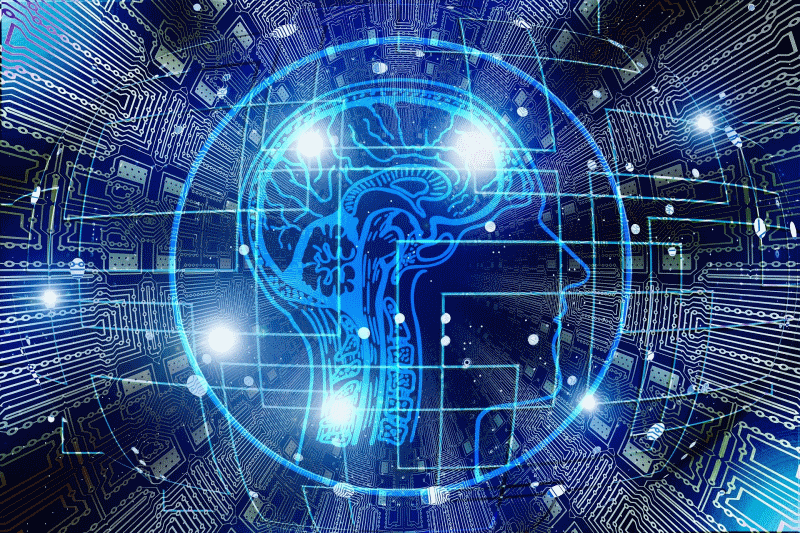Introduction to artificial intelligence: what is it and how does it work?

Artificial intelligence (AI) is a branch of computer science that is dedicated to the study and development of systems that can perform tasks that require human intelligence, such as pattern recognition, machine learning, and natural language processing. AI has come a long way in recent years and is now present in many aspects of our daily lives, from voice recognition on our smartphones to online virtual assistants.
But what exactly is AI and how does it work? In this article, we will explore the foundations of AI and look at some examples of its use in the real world.
What is artificial intelligence?
AI can be defined in many ways, but at its essence it is the ability of a machine to perform tasks that require human intelligence. This includes tasks such as pattern recognition, machine learning, and natural language processing.
There are different types of AI, and each one focuses on a particular type of task. For example, pattern recognition AI is used to detect patterns in large sets of data and make predictions based on them. Machine learning AI, on the other hand, is used to make machines learn from experience without explicit programming. And natural language processing AI is used to make machines understand and process human language naturally.
How does artificial intelligence work?
AI is based on algorithms and mathematical models that allow machines to process and analyze large sets of data. These algorithms and models are trained with a large set of labeled data, which are used to “teach” the machine how to perform a specific task. For example, if we want a machine to be able to recognize images of cats, we will provide it with a large set of labeled images of cats and teach it to detect patterns that repeat in those images. As the machine processes more and more labeled images, it starts to learn for itself how to recognize cats in new images.
Once the machine has been trained, it can be provided with new sets of data and asked to perform the task it has been trained for. For example, if we have trained a machine to recognize cats in images, we can show it a new image and ask if there is a cat in it. If the machine has been trained properly, it should be able to recognize cats with a high degree of accuracy.
Examples of artificial intelligence in the real world
Artificial intelligence (AI) is increasingly being used in many aspects of our daily lives. Some examples of its use include:
- Virtual assistants: Many companies, such as Apple and Google, have developed virtual assistants that use AI to understand natural language and help users perform specific tasks. For example, Siri and Google Assistant can help users make restaurant reservations or find directions.
- Online recommendations: Many online platforms, such as Netflix and Amazon, use AI to make personalized recommendations to users based on their interests and preferences. This is done using machine learning algorithms that analyze the content the user has viewed and make predictions about what type of content they would like to see next.
- Voice recognition: Many smartphones and virtual assistants also use AI to recognize human voice and understand what we are saying. This is done using natural language processing algorithms that analyze the pattern of sounds and words and translate it into a coherent message.
- Automatic translation: Automatic translation is an application of artificial intelligence that allows texts and speech to be translated from one language to another automatically. This can be especially useful for people who do not speak the same language and need to communicate, as well as for companies looking to expand into new international markets. Machine learning algorithms are trained with large sets of data from previous translations, which allows them to improve their accuracy as they gain more experience. While automatic translation is not yet perfect, it has significantly improved in recent years and is expected to continue improving as the technology advances.
- Autonomous driving: AI is also increasingly being used in the development of autonomous vehicles. These vehicles use sensors and machine learning algorithms to detect and respond to obstacles and hazards on the road. As the vehicles collect more and more driving data, the machine learning algorithms become increasingly accurate and able to handle increasingly complex situations.
- Data analysis: AI is also used to analyze large sets of data and extract valuable information. For example, machine learning algorithms can analyze large sets of sales data and detect patterns and trends that might not be obvious to humans. This can help companies make informed decisions about how to improve their products and services.
In summary, artificial intelligence is a rapidly developing technology that is transforming the way we interact with the world around us. From virtual assistants to autonomous vehicles, AI is making our lives easier and more efficient in many ways. However, as with any technology, there are also ethical and societal considerations to be taken into account as we continue to develop and use AI.
Una respuesta
[…] Artificial intelligence (AI) is rapidly becoming one of the most transformative technologies of our time. It is already being used in a variety of applications across different industries, and the business world is no exception. From automating repetitive tasks to improving decision-making, AI is helping companies of all sizes and types to become more efficient and effective. […]